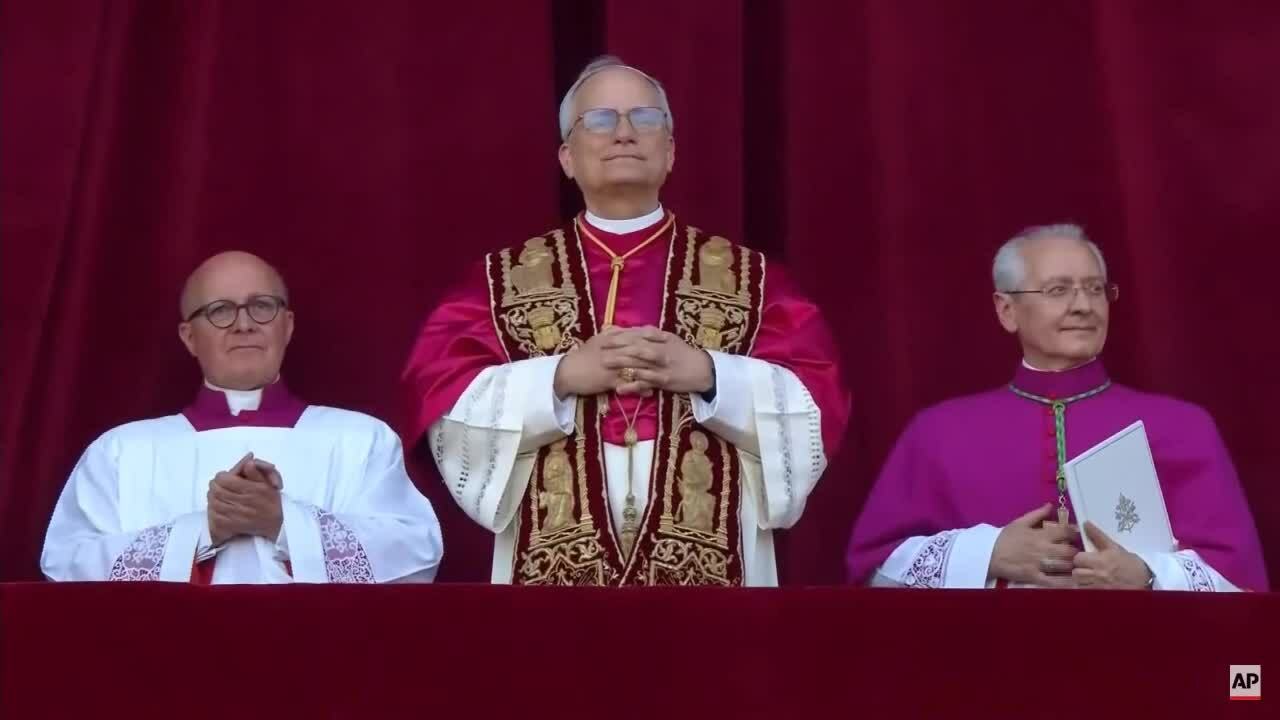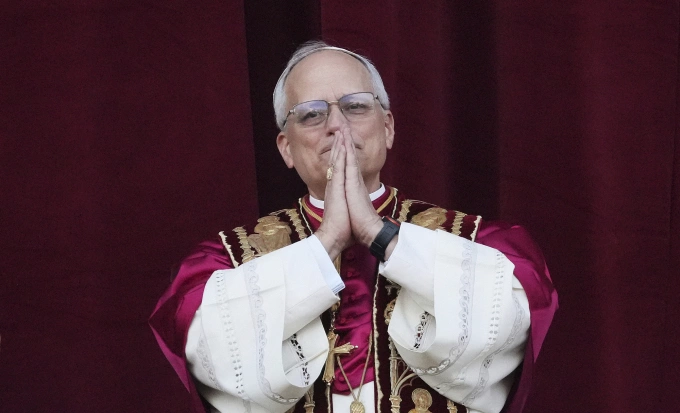Cardinal Prevost is the first American to become Pope and many hope his balanced stance can help heal rifts within the Church.
White smoke rose from the chimney of the Sistine Chapel on the second day of the conclave to elect a successor to Pope Francis. For the first time in history, an American cardinal became the leader of the 1.4 billion Catholics.
Cardinal Robert Francis Prevost, 69, then appeared on the balcony of St. Peter’s Basilica, presenting himself to the faithful as Pope Leo XIV.
“Peace be with you,” Pope Leo XIV told the crowd in the square below. “Together we must strive to be a missionary church, a church of bridges and dialogue, always open like this square, to welcome all those who need our charity and our presence.”
The Vatican describes him as the second pope from the Americas after his predecessor Francis, and the first pope from the Order of St. Augustine.

AP
Pope Leo XIV was born in Chicago, Illinois, USA in 1955 to parents of Spanish and French-Italian descent. Raised in Dolton, Illinois, he served as an altar boy at St. Mary’s Church in the south suburbs of Chicago.
He graduated from St. Augustine Seminary High School in 1973 and received a letter of commendation for his academic excellence. He received a bachelor’s degree in mathematics from Villanova University in Pennsylvania in 1977. He speaks English, Spanish, Italian, French, and Portuguese, and can read Latin and German.
Prevost’s brother said he had wanted to become a priest since he was a child. In September 1977, he entered the Augustinian Order as a novice at the Immaculate Conception Church in Missouri.
In 1982, he received a Master of Divinity degree from the Catholic Theological Union, a graduate school in Chicago. That same year, he was ordained a priest.
He received his bachelor’s degree in canon law in 1984 and moved to Peru to work a year later, where he was granted citizenship. However, he returned to the United States regularly to serve as a priest and abbot in his homeland.
After receiving a doctorate in canon law in 1987 from the Pontifical University of St. Thomas Aquinas in Rome, Italy, he returned to Peru in 1988 and spent the next 10 years leading the Augustinian seminary in Trujillo, in the northwest of the country.
In early March 1999, Father Prevost returned to the United States to assume the position of Augustinian Province of Chicago. From 2001 to 2013, he served as Superior General of the Order of St. Augustine, an important international leadership role. During this time, he traveled extensively around the world to visit Augustinian communities and promote the unity and growth of the Order.
In 2014, Pope Francis appointed him Bishop of Chiclayo in Peru. During his time as Bishop of Chiclayo, he frequently visited remote communities, focusing on serving the poor, strengthening parishes, and promoting social justice.
Yolanda Diaz, a teacher and church member in Chiclayo, said that instead of asking everyone in the diocese to come to church, Bishop Prevost always wanted to “bring the church to the people” and was always close to and concerned about the problems of local believers.
He became Archbishop in January 2023. Three months later, Pope Francis appointed him Prefect of the Congregation for Bishops, one of the Vatican’s most important bodies, responsible for selecting and overseeing the appointment of bishops around the world.
The move shows that Pope Francis values service experience and diversity in leadership roles in the Catholic Church, according to observers. In late 2023, Pope Francis appointed him a cardinal, becoming one of the youngest members of the College of Cardinals.
Prevost is said to be a supporter of Pope Francis’ continued reform of the Church. He also shares the late Pope’s views on issues of migrants, the poor and the environment.
As cardinal, Robert Francis Prevost has not been shy about challenging the actions of the Trump administration. He has reposted an X-post criticizing the administration’s deportation of a U.S. citizen to El Salvador and shared a commentary critical of Vice President JD Vance.
For many, the call for building bridges in his first speech as pope suggested that Cardinal Prevost, now Pope Leo XIV, wanted to continue the stance of his predecessor on immigration. Pope Francis earlier this year criticized the Trump administration’s mass deportation plan as “hurting the dignity of many men and women.”
“He is balanced, calm and good at handling crises,” said Father Mark R. Francis, a former classmate of Pope Leo XIV. “He is thoughtful and provides steady leadership.”
Michele Falcone, a priest in the Augustinian Order that Cardinal Prevost leads, said the new pope has a collaborative leadership style and can adapt to the situation. Cardinal Prevost is also known to play tennis and is a baseball fan.

Many colleagues praised the new Pope’s achievements during his time as Bishop of Peru. He also benefited from the strong international network he built within the Church while working as Pope Francis’s appointee of bishops in many parts of the world.
Pope Leo XIV now faces the challenge of healing deep rifts between conservatives and progressives in the Church. His reticence to speak out on divisive issues like blessing gays may make him a popular choice with many cardinals.
“He’s someone who can make progressives and conservatives feel comfortable. Both sides can find things they admire and sympathize with in him. I don’t think that will resolve the differences in the Church, but it’s a success,” said Father Robert Sirico, president emeritus of the Acton Institute, a faith-based research group in the United States.